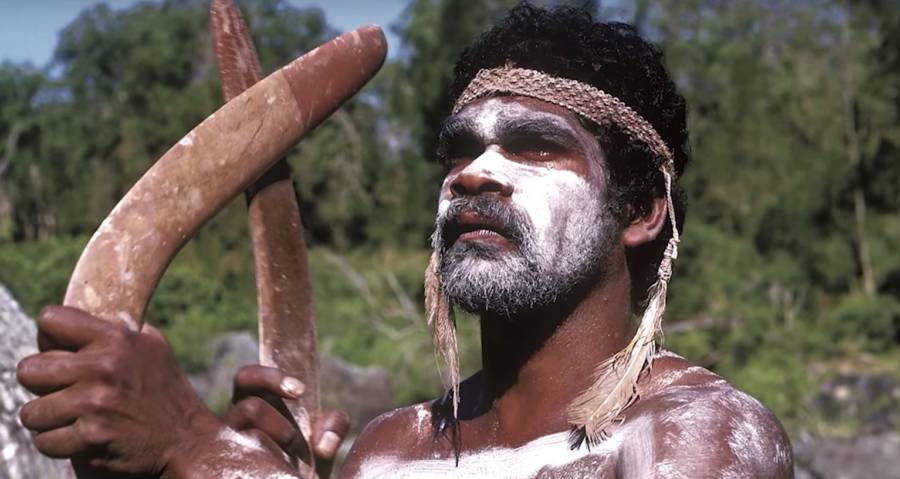Did Aboriginal Australians Really Invent the Boomerang?
Discovering the truth behind the iconic weapon - did Aboriginal Australians actually invent the boomerang? Let's find out!

Source allthatsinteresting.com
Who Invented the Boomerang?
Ancient Origins of Boomerangs
Boomerangs are iconic Australian symbols that have existed for over 10,000 years. Indigenous Australians originally used these weapons for hunting and sport. The word boomerang is thought to have been derived from a language spoken by an Indigenous Australian group, the Turuwal. Boomerangs were often made from hardwood, shaped by hand, and designed to achieve the perfect balance between weight and aerodynamics.
Boomerangs were an integral part of Indigenous Australian culture, with each region having their unique design and technique. In some cultures, women made boomerangs and even used them in ceremonial dances. However, the use of boomerangs declined with European colonization, which saw the introduction of guns and other modern weapons.
Ancient Boomerangs Around the World
Although Indigenous Australians are credited with inventing the boomerang, evidence of boomerangs has been found in other ancient cultures. In fact, boomerangs have been discovered in North America, Europe, and Egypt. One of the earliest examples of boomerang-like objects comes from Poland, where a 20,000-year-old object was found that shows evidence of throwing and returning.
The Egyptians also created boomerangs, which were used in hunting and warfare. They used different materials such as wood, ivory, and metal, and also developed specialized throwing techniques to create long-range boomerangs. Additionally, some Native American tribes made boomerang-like weapons, such as the rabbit stick, which was used to knock down small game.
Contemporary Innovations
Today, boomerangs are still used for sport, recreation, and artistic expression. Contemporary boomerangs come in many shapes and sizes and may include decorative designs or specialized patterns. Boomerangs also come in different types, such as the returning boomerang, non-returning boomerang, and the boomabird.
Modern boomerangs are typically made from lightweight materials such as plastic, foam, or carbon fiber. The design and materials vary for different purposes, such as distance throwing and boomerang competitions.
Competitive boomerang throwing has become a popular sport, with various tournaments held around the world. Boomerangs are also used for artistic expression, with some artists creating intricate designs on boomerangs or using them in performance pieces.
Overall, the boomerang has evolved significantly over thousands of years. From its humble beginnings as a hunting weapon to a modern-day sport and art form, the boomerang has remained an important part of human culture.
The History of Key and Lock InventionAncient Boomerangs
Boomerangs are curved throwing tools that fly through the air and return to the thrower. These weapons have a rich history and have been used by different cultures for various purposes. There are various types of boomerangs, including straight, returning, non-returning, and cross-stick boomerangs.
Indigenous Australians
The indigenous Australians are credited with inventing the returning boomerang. The returning boomerang is a unique and fascinating weapon that can fly through the air and return to the thrower. Aboriginal people created the boomerang for hunting and sport and used specific wood types and shaping techniques to create different types of boomerangs.
The returning boomerang consisted of a flattened, curved piece of wood about 2 feet long. It had a distinctive "elbow," which helped it spin in the air. Aboriginal people used the boomerang in hunting by throwing it towards a flock of birds or a group of animals, causing them to fly into the air. The returning boomerang would then fly back towards the thrower, who could catch it and reuse it.
However, not all boomerangs return. Some boomerangs were designed to fly straight or in a curved path and not return. These types of boomerangs were used for a different purpose, such as for killing birds or as a throwing stick in warfare. They were also used as musical instruments and in dances and other cultural ceremonies.
Egypt
The Egyptians also used boomerangs for hunting, transportation, and warfare. The ancient Egyptians called boomerangs "throwing sticks." They used various materials, including wood, ivory, and metal, to create boomerangs. The metal boomerangs were used as weapons in warfare.
The Egyptians used the boomerang primarily for hunting birds and small animals. They would throw the boomerang towards the prey, and it would hit them with great force, killing or injuring them. The boomerang was also used as a means of transportation, where Egyptians could throw the boomerang and have it return to them, thus saving their energy.
North America and Europe
The boomerang was also used by the Navajo and Pueblo tribes in North America. They used boomerangs in hunting, religious ceremonies, and entertainment. The Navajo created the flat boomerang, which was used for hunting rabbits and other small animals. The Pueblo people created a non-returning boomerang, which was used for religious ceremonies.
In Europe, boomerangs were also used for sport and entertainment. In the 19th century, boomerang throwing became a popular sport in Europe. The English began crafting boomerangs for this purpose, using different materials such as horn, wood, and steel. The sport of boomerang throwing became so popular that the first international boomerang tournament was held in 1906 in Paris.
In conclusion, the boomerang has a rich and diverse history across various cultures. From ancient times, it has been used for hunting, transportation, warfare, religious ceremonies, and sport. Different cultures developed different types of boomerangs depending on their needs, and this fascinating curved throwing tool remains popular today.
When Was Video Recording Invented?